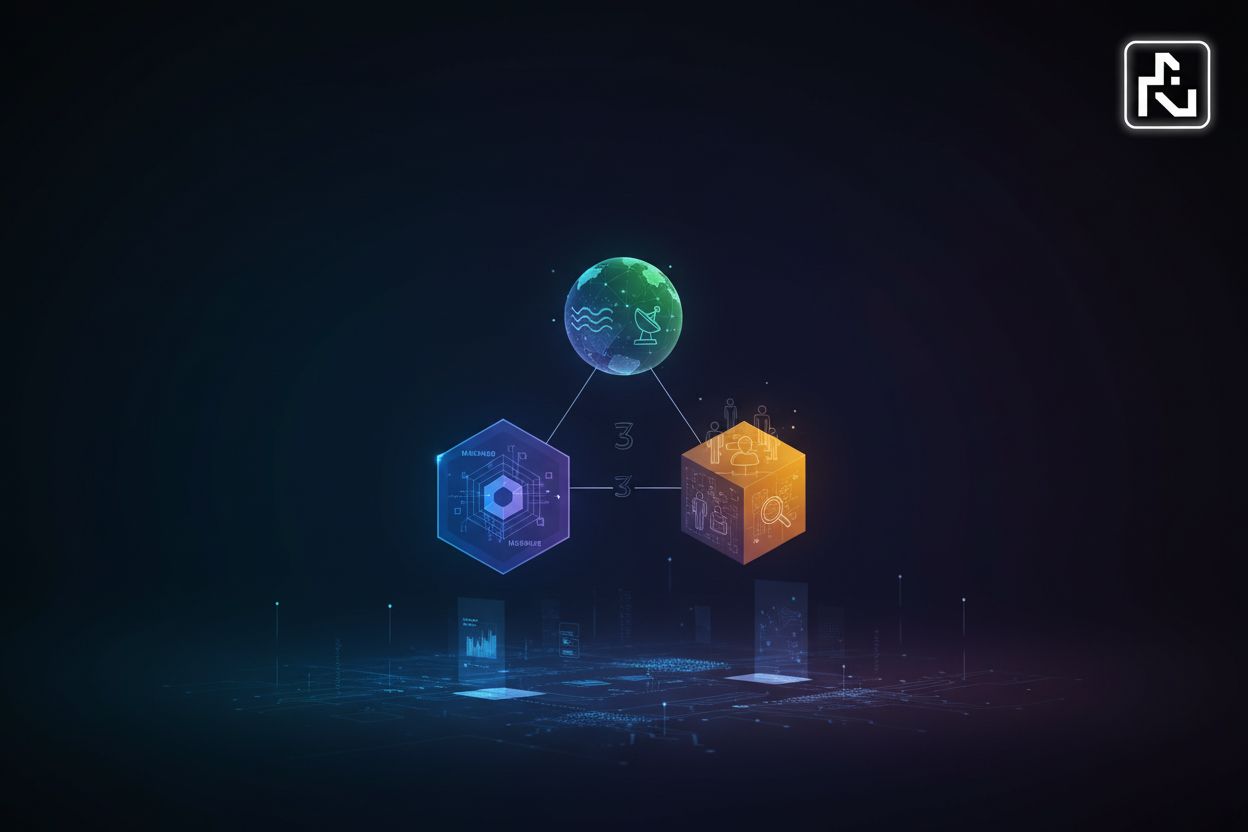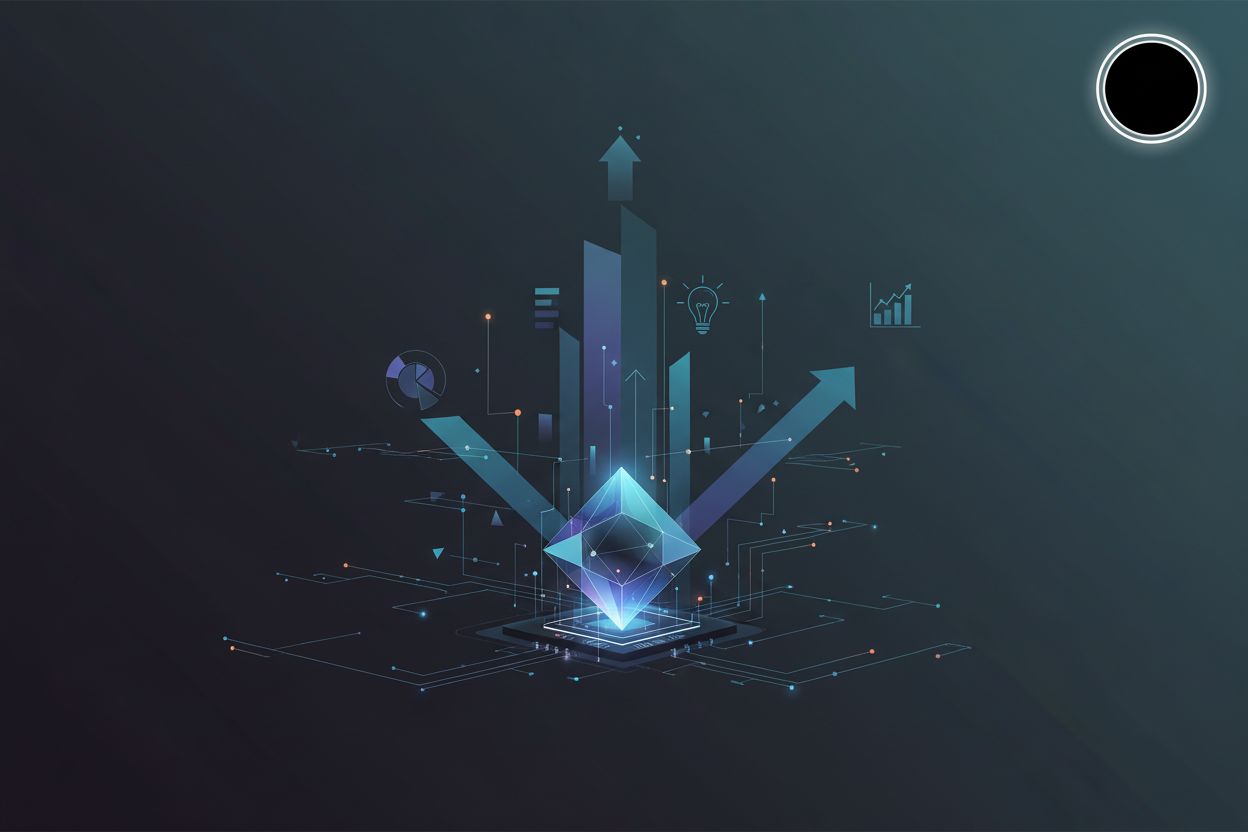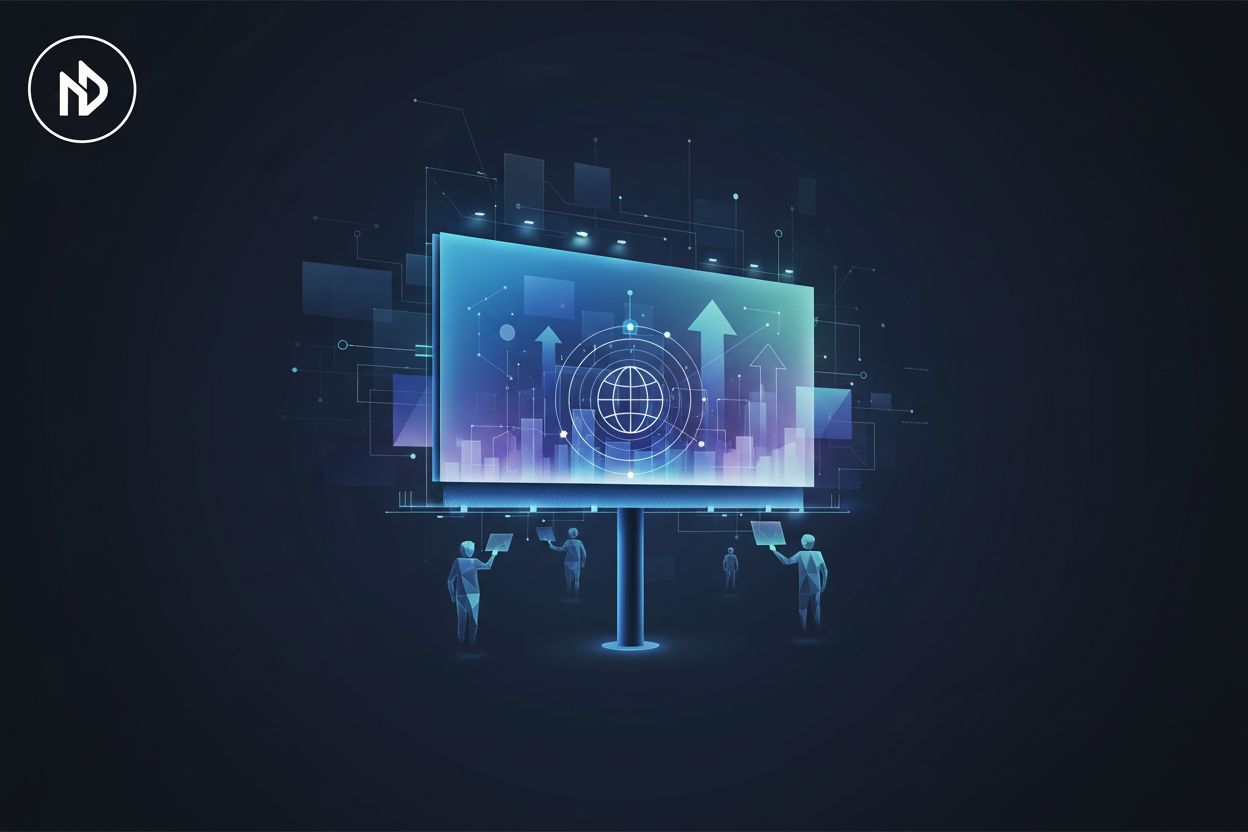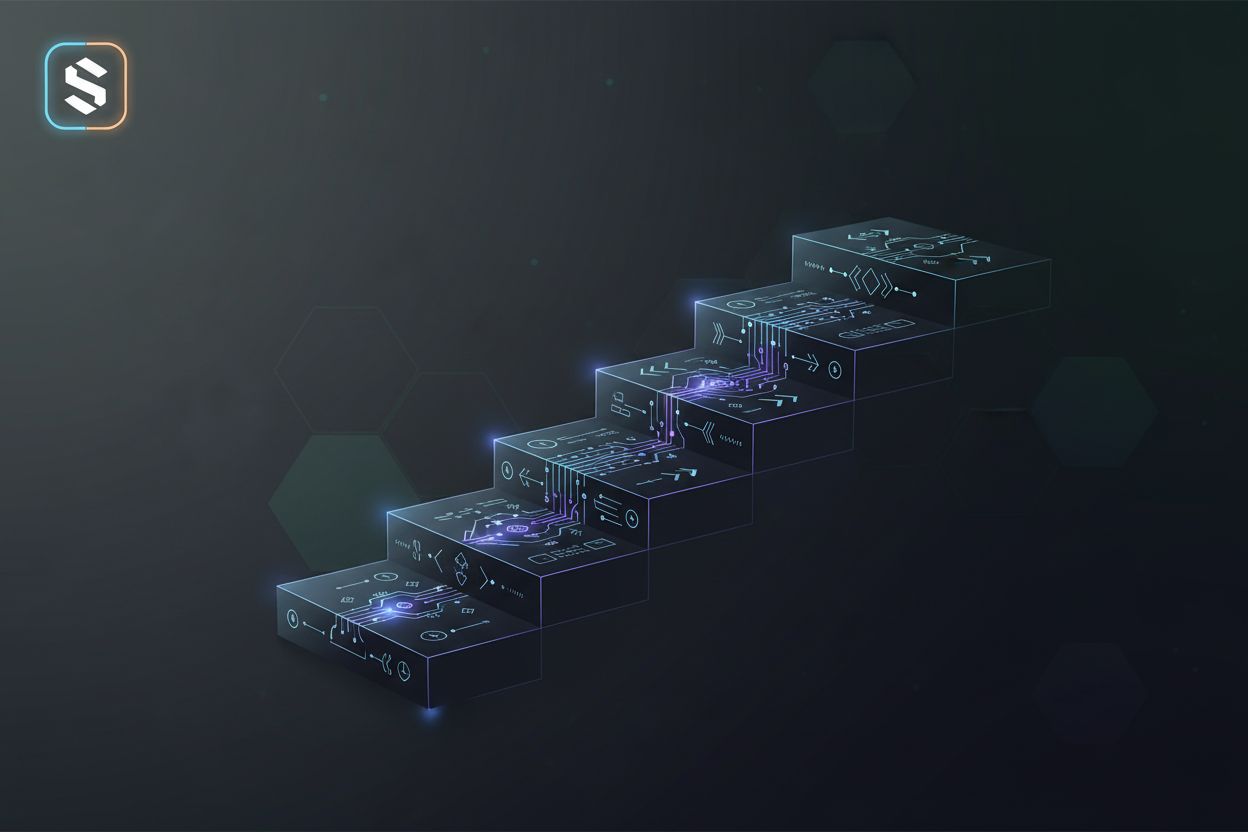Edge Computing: Revolutionizing User Experience in the Digital Age
Understanding Edge Computing and Its Core Principles
Edge computing is changing how we experience the digital world, but do you know how it works? It's a powerful approach that brings data processing closer to you.
Edge computing is a distributed computing model. It moves computation and data storage closer to the source of the data Edge computing In other words, processing happens near the user or device, not in a faraway data center.
- Instead of sending all data to the cloud for processing, edge computing analyzes data locally. This reduces latency, the delay between a request and a response.
- Edge computing contrasts with traditional cloud computing, where data is sent to centralized servers. By processing data locally, edge computing minimizes the need to send large amounts of data over the network.
- Key benefits include faster response times, reduced bandwidth usage, and enhanced privacy and security. According to Forbes, edge computing enables near-real-time, instant analysis, providing both machines and humans with the ability to make faster, better-informed decisions.
Several core principles define how edge computing operates:
- Proximity: Data is processed closer to where it's generated, whether that's a user device, an IoT sensor, or another source.
- Decentralization: Processing power is distributed across a network of edge devices, rather than concentrated in a central location.
- Real-Time Processing: Edge computing allows for immediate analysis and response to data inputs, which is crucial for applications requiring quick decision-making.
- Bandwidth Reduction: By processing data locally, edge computing minimizes the amount of data that needs to be transferred to the cloud.
Edge computing is transforming industries by enabling faster, more efficient data processing at the source. Next, we'll explore the benefits of edge computing in more detail.
The Impact of Edge Computing on User Experience (UX)
Edge computing is transforming user experiences in ways we're only beginning to realize. By bringing processing power closer to users, it unlocks possibilities that enhance how we interact with technology.
Edge computing significantly reduces latency, which is the delay users experience when interacting with digital services. This improvement stems from processing data closer to the source, minimizing the distance data must travel.
- Faster Loading Times: Edge computing minimizes delays in content delivery. By caching content on edge servers, websites and applications load much faster, creating a smoother user experience.
- Real-Time Interactions: It enables seamless experiences for applications requiring immediate feedback. This is critical for online gaming, augmented reality, and other interactive applications where delays can ruin the experience.
- Enhanced Mobile Experiences: Edge computing optimizes performance on mobile devices by processing data locally. Offloading tasks from the device reduces battery drain and improves responsiveness, which is especially important for mobile gaming and streaming.
Edge computing enables more personalized and context-aware user experiences. By processing data locally, it can tailor content and functionality to individual users.
- Localized Data Processing: Edge computing allows for tailored content and recommendations based on user location. Retailers can use this to display local promotions, while navigation apps can provide more accurate, real-time traffic updates.
- Real-Time Personalization: It enables dynamic adjustments to UX based on immediate user behavior. For instance, an e-commerce site can adjust product recommendations based on a user's current browsing session.
- Improved User Engagement: Edge computing delivers more relevant and engaging experiences through contextual awareness. Imagine a museum app that provides detailed information about an exhibit as you stand in front of it, or a smart home system that adjusts lighting and temperature based on your location in the house.
One of the most understated benefits of edge computing is the ability to provide offline functionality and enhanced reliability. By storing data and processing capabilities locally, applications can continue to function even when network connectivity is limited or unavailable.
- Continuous Operation: Edge computing allows applications to function even with limited or no internet connectivity. This is crucial for field workers, transportation systems, and other scenarios where reliable connectivity cannot be guaranteed.
- Data Redundancy: It ensures data availability and prevents data loss during network outages. Edge devices can store redundant copies of critical data, ensuring that information remains accessible even if the primary network connection fails.
- Enhanced User Satisfaction: Edge computing provides a reliable and consistent experience regardless of network conditions. This is particularly important for applications where downtime can have serious consequences, such as in healthcare or industrial automation.
As edge computing continues to evolve, its impact on user experience will only grow. Next, we'll explore how edge computing is enhancing data privacy and security.
Edge Computing Use Cases for Enhanced UX
Imagine a world where your shopping cart knows what you need before you do. Edge computing is making that a reality.
Here are a few ways edge computing enhances user experience across different industries:
- Retail: Personalized Shopping Experiences
- In-Store Personalization: Edge computing enables smart shelves to recommend products based on your past purchases. This creates a more tailored and convenient shopping experience.
- Real-Time Inventory Management: Cameras powered by edge computing ensure shelves are always stocked. This minimizes the frustration of finding empty spaces where your favorite items should be.
- Facial Recognition Payments: Edge computing facilitates faster checkout experiences using facial recognition. This reduces wait times and streamlines the payment process.
As Neelima Mangal from Forbes Council says, edge computing translates to shorter wait times and more personalized shopping experiences, making it easier to locate what you're looking for.
Healthcare: Remote Patient Monitoring
- Real-Time Data Analysis: Edge computing allows for local processing of health data for immediate interventions. This is crucial for patients who require constant monitoring and quick responses.
- Improved Patient Outcomes: Quicker medical responses are now possible based on real-time monitoring. Edge computing reduces latency, enabling faster and more effective care.
- Enhanced Data Security: Processing health data on-premises helps meet regulatory standards like HIPAA. This ensures sensitive patient information remains secure.
Smart Cities: Optimized Traffic Management
- Real-Time Traffic Analysis: Edge computing enables local data processing at intersections for efficient traffic flow. This reduces congestion and improves commute times.
- Improved Pedestrian Safety: Edge computing enhances safety measures based on real-time conditions. This includes adjusting traffic signals to protect pedestrians.
- Prioritized Emergency Routes: Optimized routes for emergency vehicles reduce response times. Edge computing ensures that first responders can reach their destinations quickly.
As seen, edge computing offers numerous benefits for enhancing user experience across various sectors.
Next, we'll explore how edge computing enhances data privacy and security.
Implementing Edge Computing in Your Digital Strategy
Edge computing can feel like a complex puzzle, but it doesn't have to be. By strategically implementing edge computing, you can transform your digital strategy and enhance user experiences.
Start by thoroughly analyzing your existing user experience. Pinpoint areas where latency or a lack of personalization negatively affects user satisfaction.
- Gather direct feedback from your users. Conduct surveys, perform usability tests, and carefully analyze customer reviews to understand their pain points.
- Prioritize improvements based on the impact on user experience and the feasibility of addressing them with edge computing. Focus on pain points that edge computing can solve effectively.
Choosing the right infrastructure is crucial for successful edge computing implementation. You'll need to assess your processing power, storage, and network requirements.
- Evaluate connectivity options. Consider solutions like 5G and Wi-Fi for your edge devices.
- Select edge devices based on your specific use case. This might include servers, gateways, or even smart devices. Supermicro offers a range of IOT/Embedded Systems that can be used for industrial automation, retail, and healthcare applications Edge Computing - Solutions.
Next, you'll need to optimize your applications for local processing. This reduces resource consumption and improves performance.
- Implement robust data security measures. Ensure data encryption and strict access controls for all edge devices to protect sensitive information.
- Monitor application performance and user experience metrics. This allows you to continuously optimize your edge deployments.
By following these steps, you can effectively integrate edge computing into your digital strategy. This can lead to significant improvements in user experience.
Now, let's explore how edge computing can enhance data privacy and security.
Overcoming Challenges and Ensuring Security in Edge Computing
Can you imagine hackers lurking within your edge computing network? While edge computing enhances user experience, it also introduces unique security and management challenges.
One primary challenge is ensuring data security across distributed edge locations. With data spread across numerous devices, the attack surface increases, making it harder to protect sensitive information.
- Data Encryption: Implement strong encryption mechanisms to protect data both in transit and when stored. This ensures that even if attackers gain access to edge devices, they can't decipher the data.
- Access Control: Enforce strict access controls to prevent unauthorized access to edge devices and data. Use multi-factor authentication and role-based access to limit potential damage from compromised accounts.
- Regular Security Audits: Conduct regular security audits to identify and address potential vulnerabilities. Penetration testing and vulnerability scanning can help uncover weaknesses before attackers exploit them.
Another hurdle is maintaining scalability and reliability as edge deployments grow. As the number of edge devices increases, managing and ensuring their consistent performance becomes more complex.
- Distributed Architecture: Design a scalable architecture that can handle increasing data volumes and user loads. Use containerization and orchestration tools to manage and deploy applications across numerous edge locations efficiently.
- Failover Mechanisms: Implement failover mechanisms to ensure service continuity in case of device failures. Redundancy and automated failover can minimize downtime and maintain a seamless user experience.
- Remote Management: Utilize remote management tools to monitor and maintain edge devices efficiently. Centralized monitoring and management can help identify and resolve issues before they impact users.
Edge computing offers tremendous potential, but addressing these security and management challenges is crucial for successful implementation. By prioritizing security and scalability, organizations can harness the benefits of edge computing while minimizing risks.
Next, we'll explore the transformative future trends in edge computing.
The Future of Edge Computing and User Experience
Edge computing is not just a futuristic concept; it's a present-day reality reshaping digital experiences. As technology advances, understanding its impact is crucial for anyone aiming to stay ahead.
- Edge AI: Imagine AI algorithms running directly on devices like smartphones or security cameras. Edge AI makes real-time insights and faster decision-making possible without relying on distant cloud servers. This means quicker responses, improved privacy, and reduced bandwidth usage.
- 5G Integration: With its ultra-fast speeds and reliability, 5G is the perfect partner for edge computing. It allows for seamless connectivity and efficient data transfer at the edge, enhancing applications like augmented reality and autonomous vehicles.
- Serverless Edge Computing: Serverless architectures simplify the deployment and management of edge applications. You can focus on writing code without worrying about managing servers, making it easier to scale and maintain edge deployments.
GetDigitize helps you define your brand's core values and create a unique identity that resonates with your target audience. Their team develops and executes targeted campaigns that drive engagement and conversions.
Brand Strategy and Identity Development:
Digital and Social Media Marketing Campaigns:
Website and UI/UX Design, CMS Management: GetDigitize designs user-friendly websites and interfaces that provide seamless experiences. They also help you choose the right CMS for your needs.
Copywriting and Content Planning: GetDigitize creates compelling content that attracts and retains customers.
Product Design and Packaging, Advertising Campaigns: They design products and advertising campaigns that stand out from the competition."
Immersive Experiences: Low-latency AR/VR experiences will become more common, thanks to edge computing. By processing data closer to the user, delays are minimized, creating more realistic and engaging virtual environments.
Intelligent Automation: Edge AI will drive intelligent automation in applications ranging from smart homes to industrial robots. This means enhanced convenience, efficiency, and responsiveness in everyday tasks.
Seamless Connectivity: Edge computing will ensure seamless connectivity for IoT devices and smart environments. This will enable more reliable and responsive smart homes, smart cities, and connected industries.
The future of edge computing is bright, promising user experiences that are faster, more personalized, and more immersive than ever before. As we look ahead, let's consider how to harness the power of GetDigitize to elevate your brand in this evolving landscape.
Conclusion: Embracing Edge Computing for a Competitive Advantage
Edge computing is transforming user experiences, but how do you ensure your business benefits? Embracing edge computing requires a strategic approach to stay competitive.
Edge computing enhances UX by reducing latency, enabling personalization, and ensuring reliability. For instance, in healthcare, real-time data analysis at the edge allows for quicker medical interventions. In retail, it enables personalized shopping experiences through smart shelves.
Implementing edge computing requires careful planning and consideration of security and scalability. This includes selecting the right infrastructure, optimizing applications for local processing, and implementing robust data security measures, such as encryption and access controls.
The future of UX will be shaped by emerging trends in edge computing, such as Edge AI and 5G integration. Edge AI enables real-time insights and faster decision-making without relying on distant cloud servers.
Evaluate your current digital strategy and identify opportunities for edge computing. Pinpoint areas where latency or a lack of personalization negatively affects user satisfaction. As previously discussed, gathering direct feedback from users through surveys and usability tests is crucial.
Invest in edge computing infrastructure and development to enhance user experience. Supermicro offers a range of IOT/Embedded Systems that can be used for industrial automation, retail, and healthcare applications Edge Computing - Solutions.
Stay informed about the latest trends and best practices in edge computing. This will allow you to adapt your strategy and take advantage of new opportunities.
By embracing edge computing, you can deliver faster, more personalized, and reliable user experiences, giving your business a significant edge in the digital age.




